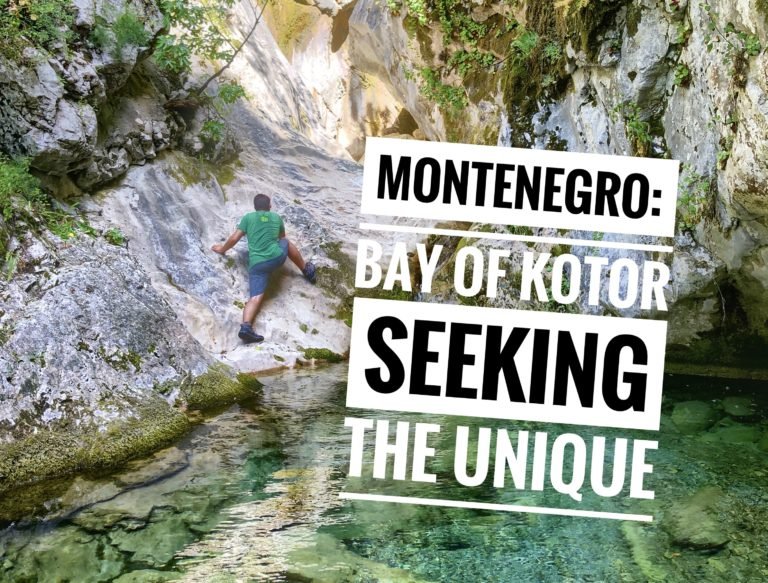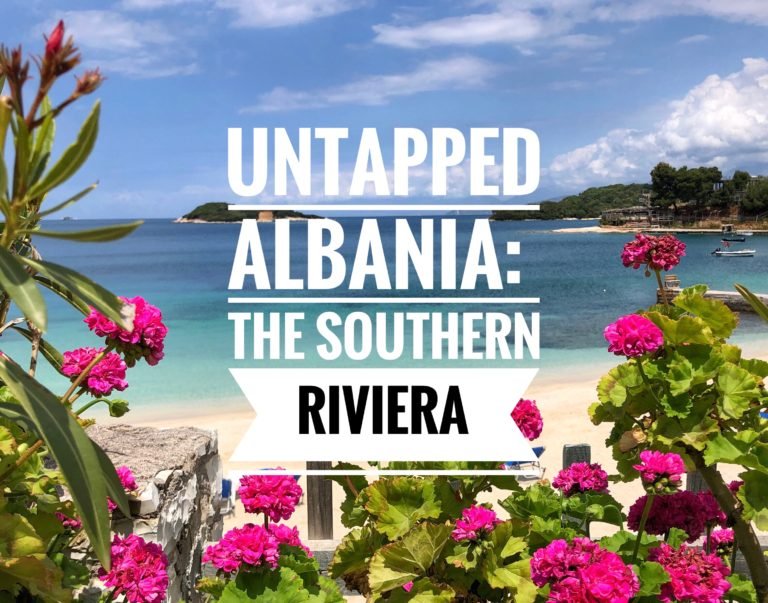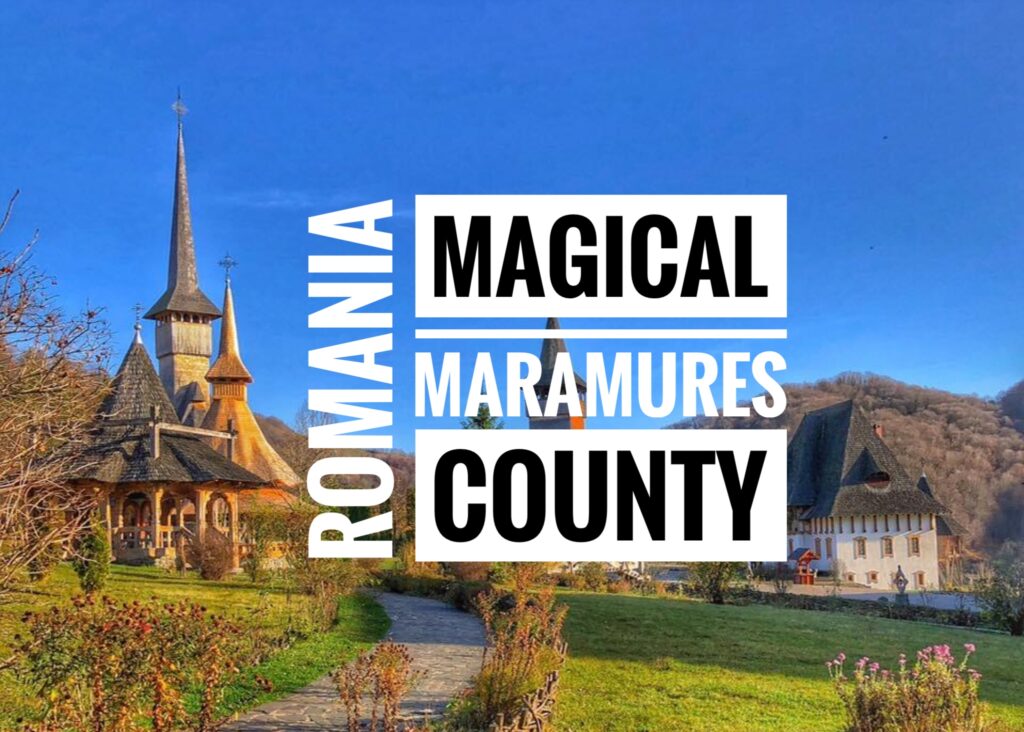
When we arrived to Romania, we were treading into an unknown. For the first time since leaving the U.S. in July, we didn’t have any plan for where we were going in the coming weeks. On the ground in Bucharest and Braşov we began asking a few locals, “what’s your favorite place to visit in Romania?” Almost without hesitation, and with a dreamy look in their eyes, they would say “Oh… Maramures!” Their answers were all the same. Consistently. This, combined with some quick research on Maramures, sealed the deal for us. It was time for the first true R & R of our travels, and a trip back to a simpler time to rural and tranquil Maramures County, pretty much the most idyllic place to unwind for a week.
Maramures is located in northwest Romania and borders the Ukraine. Arriving here is like walking into a storybook of just the type of centuries-old landscape you’d hope still exists in rural Romania. The wooden churches, quaint and unassuming villages, rolling rural landscapes, woodcrafters who still meticulously carve ornate wood facades and gates, and beautiful, hospitable people with still active customs and traditions perfectly preserved in time. We have never been anywhere quite like it. (Pictured is the captivating cluster of churches in the Botiza Monastery complex.) It is, however, essential to rent a car to properly visit Maramures. Unless you have weeks to spare or your own wheels, Trying to navigate your way around using public transportation would be extremely challenging. We were shocked and in total disbelief when we managed to score a car rental from the Cluj-Napoca Airport for $45…for a WEEK! There had to be a catch, right?
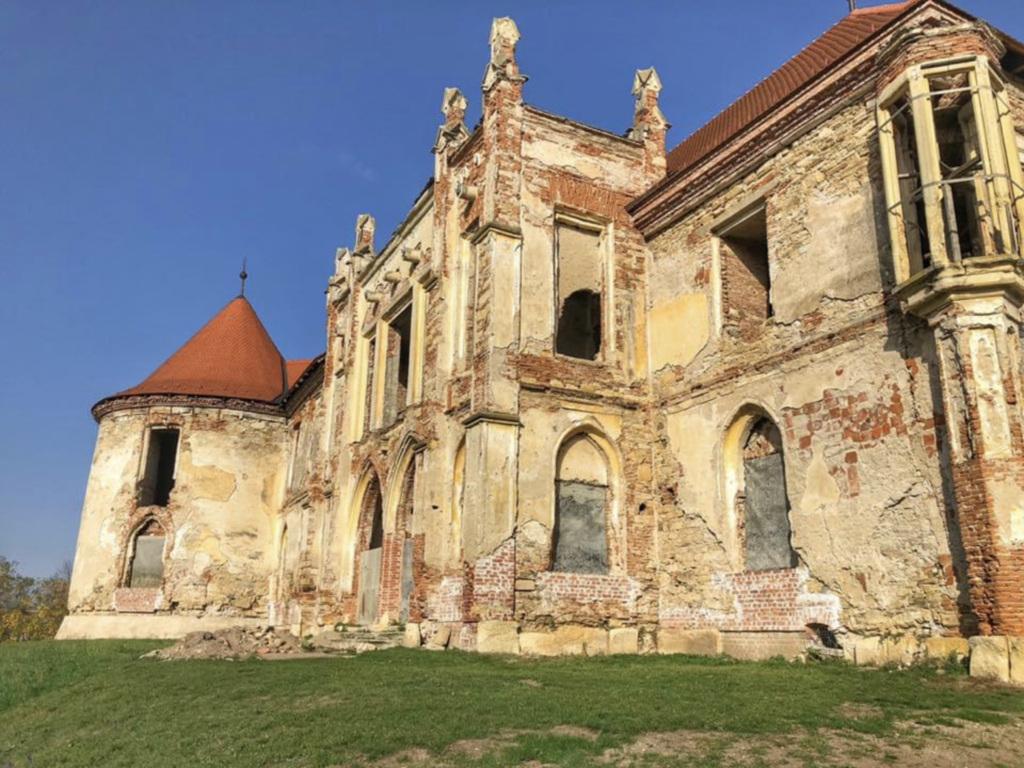
Nope. No catch, other than you have to rent from the airport location(?!). An incredible and legit $6.50 a day car rental from a company called Klass Wagen via RentalCars.com. We have to give them a shout out. So, car rental secured we didn’t waste any time and immediately took our freedom of Romania’s public transportation and set off north to a road trip. First stop, Bonțida’s Bánffy Castle, now in renovation, and once known as “The Versailles of Romania.” Between 1437 and 1543, the Banffy family built this castle and according to the Romania Journal, is one of the “most haunted places in Romania” based on the legend of a young woman stabbing a stable-man because he threatened to tell of her illicit love affair.
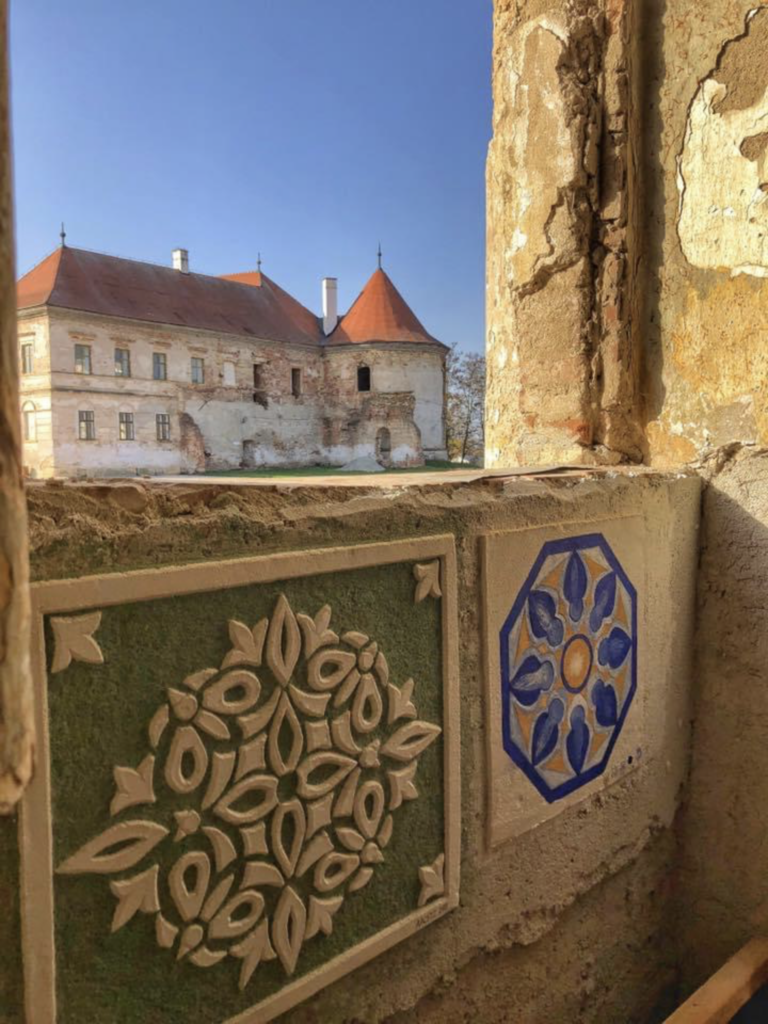
No signs of ghosts on the beautiful day we went! Just a beautiful medieval castle in ruins, an ideal picnic spot, and some lovely frescoes made by local art students, which you can see from this picture. We also learned that the castle is used every summer for the electronic music festival, for which tens of thousands of young people from all over the world attend.
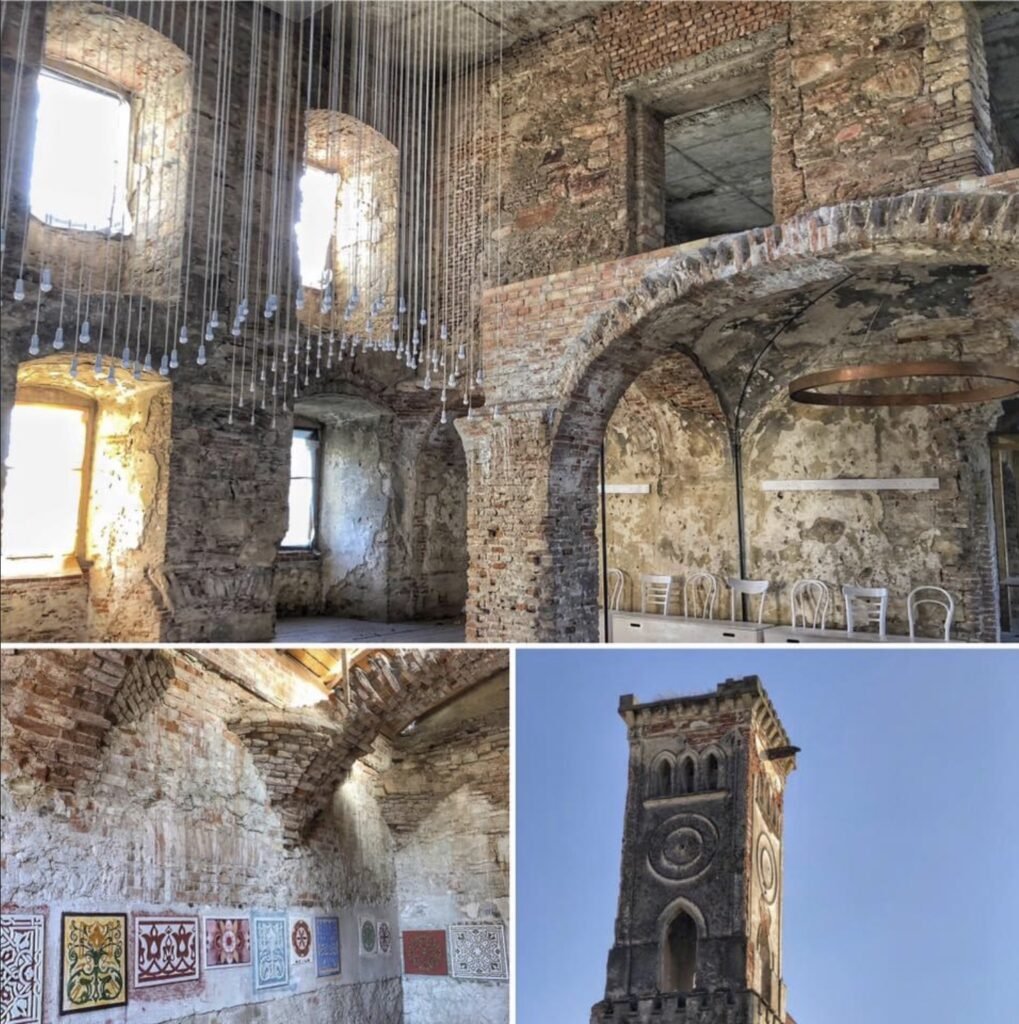
In addition to this huge music festival, they also use the space for events. Mandy’s event coordinator eyes got a little googly when she saw some of the space options. What a cool space, and we never would have made it here without our own wheels!

Moving onward toward Maramures, we immediately noticed the traffic patterns changing a bit. There was even designated horse parking, next to car parking at the local supermarket, not to mention the constant effort to weave in and out of slower moving horse buggies on the road, or farm equipment and the occasional cow herd(!) meandering down the road.
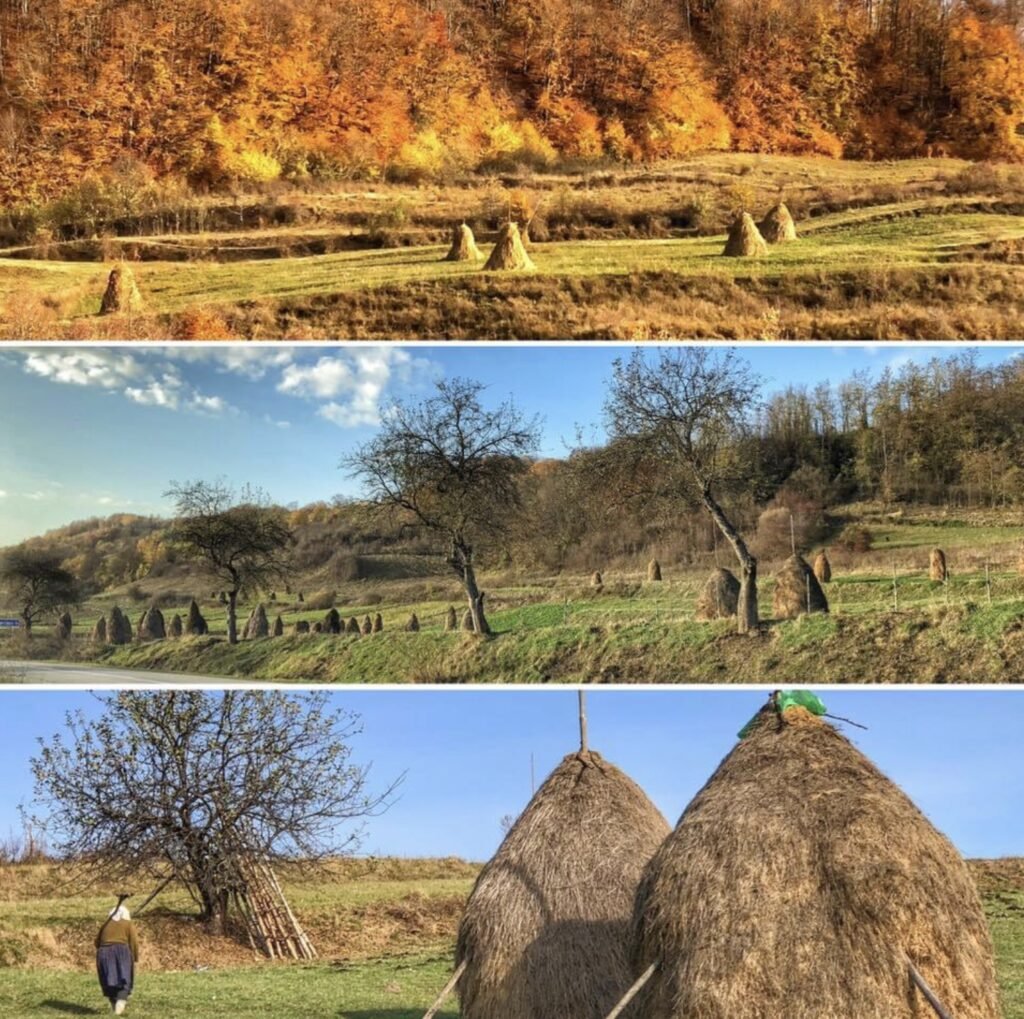
When we officially entered Maramures County, the landscape seemed to explode with fall colors, sleepy villages with smoke rising from their chimneys, and signs of a simpler life, like the hand-cut haystacks which continuously dotted the rolling hills and green farmland that stretched out before us. The hay stacks are formed through hard labor… cutting it by hand with scythe, turning it in the sun for two days with wooden pitchforks, then piled 8-10 feet high on stakes driven into the ground. Apparently, we read, a magic ingredient of salt is added to the hay. This makes the cows more thirsty, which means they drink more water and produce more milk. Brilliant!
Rohia Monastery of St. Anne
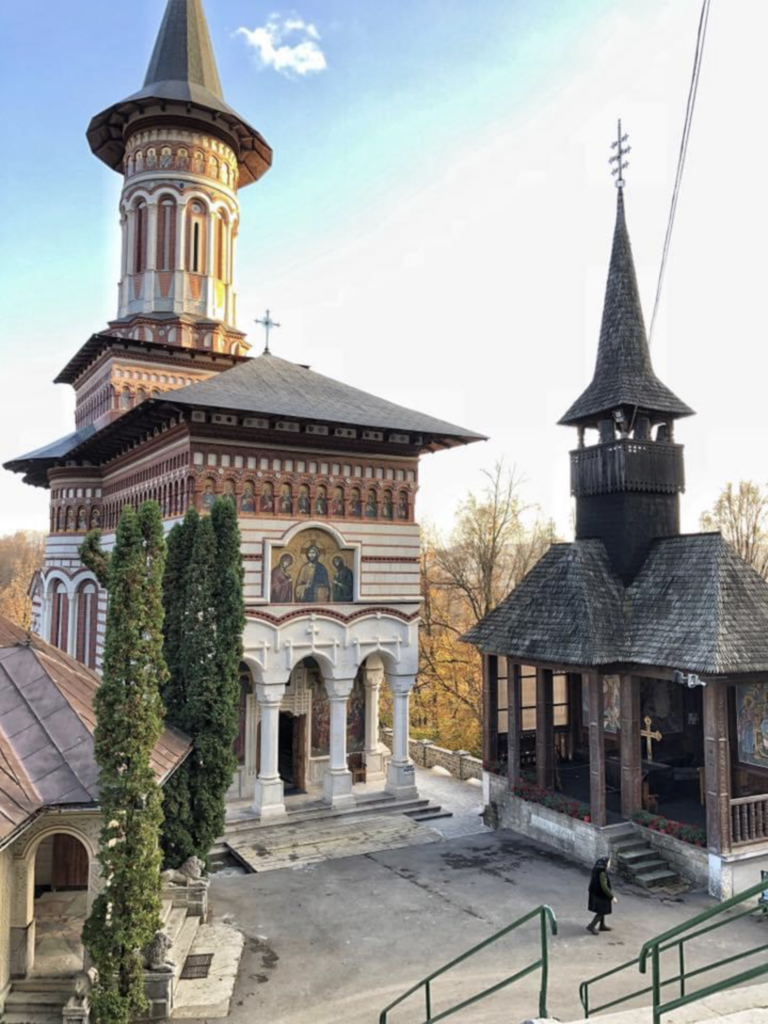
Weaving our way up the mountains to a stop at the Rohia Monastery of St. Anne. This isolated and gorgeous monastery was built in the 1920’s as a way for a priest to honor his deceased daughter. The buildings were impressive but the surrounding mountainous nature is what made it simply stunning.

The entrance to the main cathedral

The dome of the main cathedral
Casa Carolina in Cupseni

We continued to our tour off-the-beaten path journey in Maramures… until we arrived at our home for the next week at the remote countryside villa of Casa Carolina, where we were immediately welcomed by the hostess Viorica, who had carved and placed lit jack-o-lanterns on the porch to celebrate Halloween night, since we were arriving on Halloween, and a delicious home-made soup, (we suspect a pumpkin base), including a proper Romanian welcome drink of blueberry flavored brandy. Wow, what a welcome!

We were also beyond grateful to have been upgraded to a bigger room and to learn we would have this charming, traditional farmhouse with two baths, a kitchen, living room and back porch to ourselves for the week for $21/night. Oh we’re learning the joy of off-season travel!

Casa Carolina ended up being the perfect place to unwind and have some true downtime in the countryside…in fact, it was so quiet you could hear a pin drop! It was also an ideal place to serve as a base to explore Maramures. Setting out the following day for a day trip our first stop happened to be a genuine anomaly… or Gravity Hill (Zona cu Smen). Atlas Obscura had pointed us here, this place is literally in the middle of nowhere; near Cevnic. A place where gravity defies itself. A small stretch of road (about 150’) where a bottle (or a car in neutral!) will actually roll UP hill! (See separate video!) It reminded us of the Vortex in Oregon. Let us just say that we thought… it would be a hoax but sure enough, our bottle literally rolled up the hill towards the high point in the road. BIZARRE! Next stop, Budeşti village, to visit the impeccably preserved UNESCO Church of St. Nicholas, built in 1643.
Breb
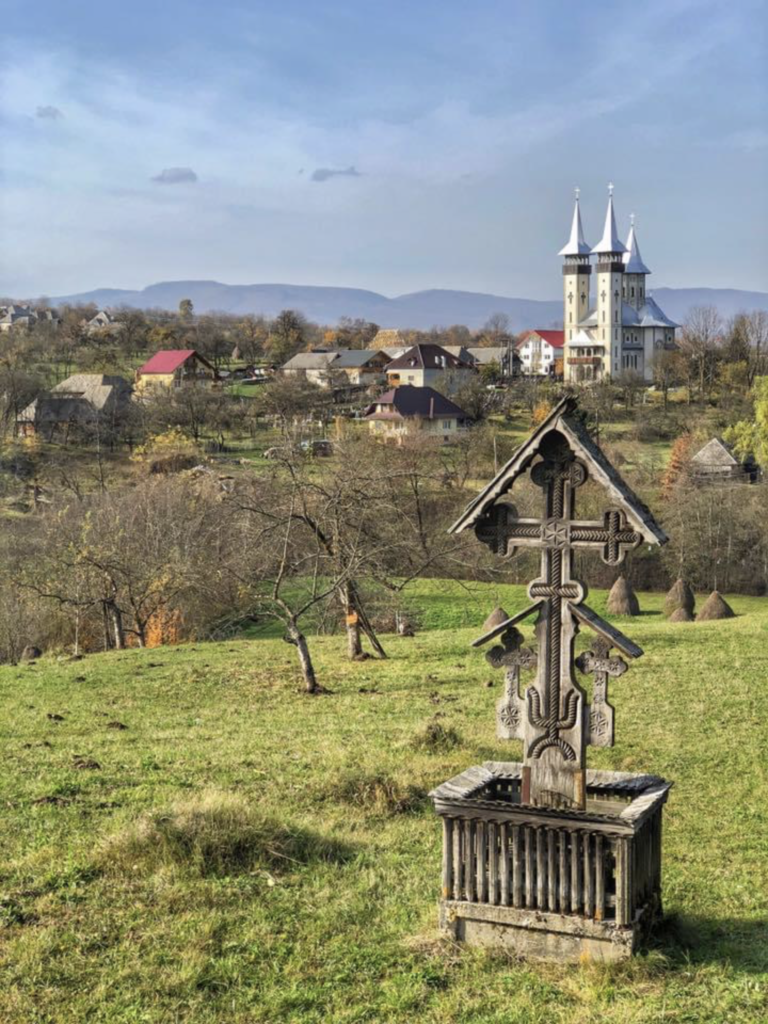
The isolated village of Breb, super quaint and adorned with a huge gate, ancient wooden houses and a 16th Century Church. It’s home to a large mix of traditional woodcrafters.
Merry Cemetery of Sapanta

We were incredibly fortunate to get to visit the most cheerful cemetery we’ve ever been to on , of all days… All Saint’s Day. This was our final stop for the day and one of the crowns jewels of Maramures, the Merry Cemetery of Sapanta. This church graveyard is ablaze with a piercing blue color painted over every grave marker, each and every cross is hand carved and hand painted. Each also tells a unique story of the person buried there.

The wooden grave markers are the work of one man and his apprentice. They each convey a celebration of life with beautiful, colorful images and gentle wit of the persons life and often how they died, through funny poems and prose. Because it was All Saint’s Day, the cemeteries were flooded with locals all dressed in black, who had come out to tidy up, weed, and bedeck their loved ones graves with beautiful flowers and candles. It was incredibly special.
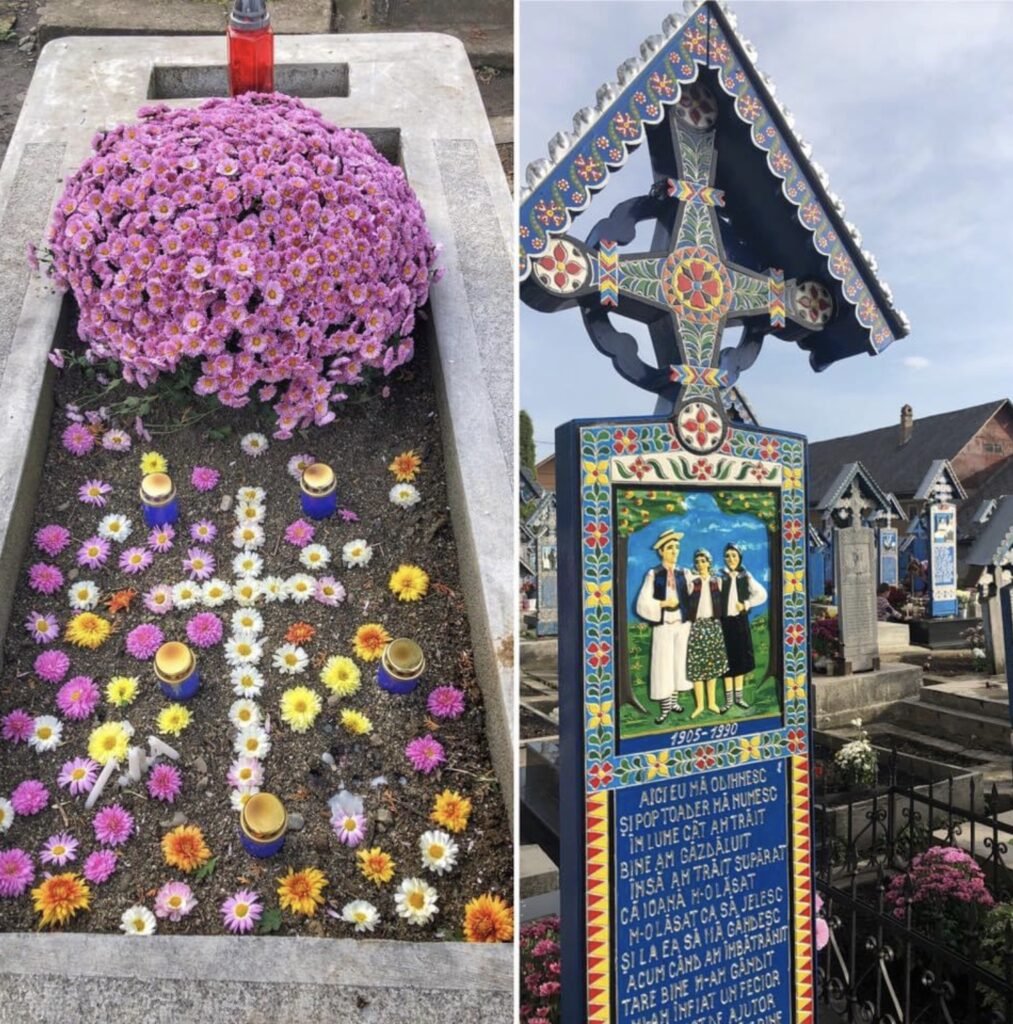
This man was clearly a shepherd, and another clearly likes to smoke a pipe. Although we couldn’t read them, we found a great website with some of the translations…

The time to craft these works of art, hundreds of them each unique, made this graveyard look spectacular… with some serious wow effect. lovely. And at right, this man clearly liked the ladies… 🙂

Grandmother and granddaughter visit the cemetery together. It was amazing. Absolutely everyone, in every town, had flowers for All Saint’s. Now we knew why!

Oh, and don’t forget to buy some goodies at the Merry tourist gauntlet on the way out. It was so hard for Mandy to resist the chance to nab a beautifully stitched traditional blouse, and accessories, but as you can imagine, souvenir purchases aren’t exactly practical for our new lifestyle!
Desesti
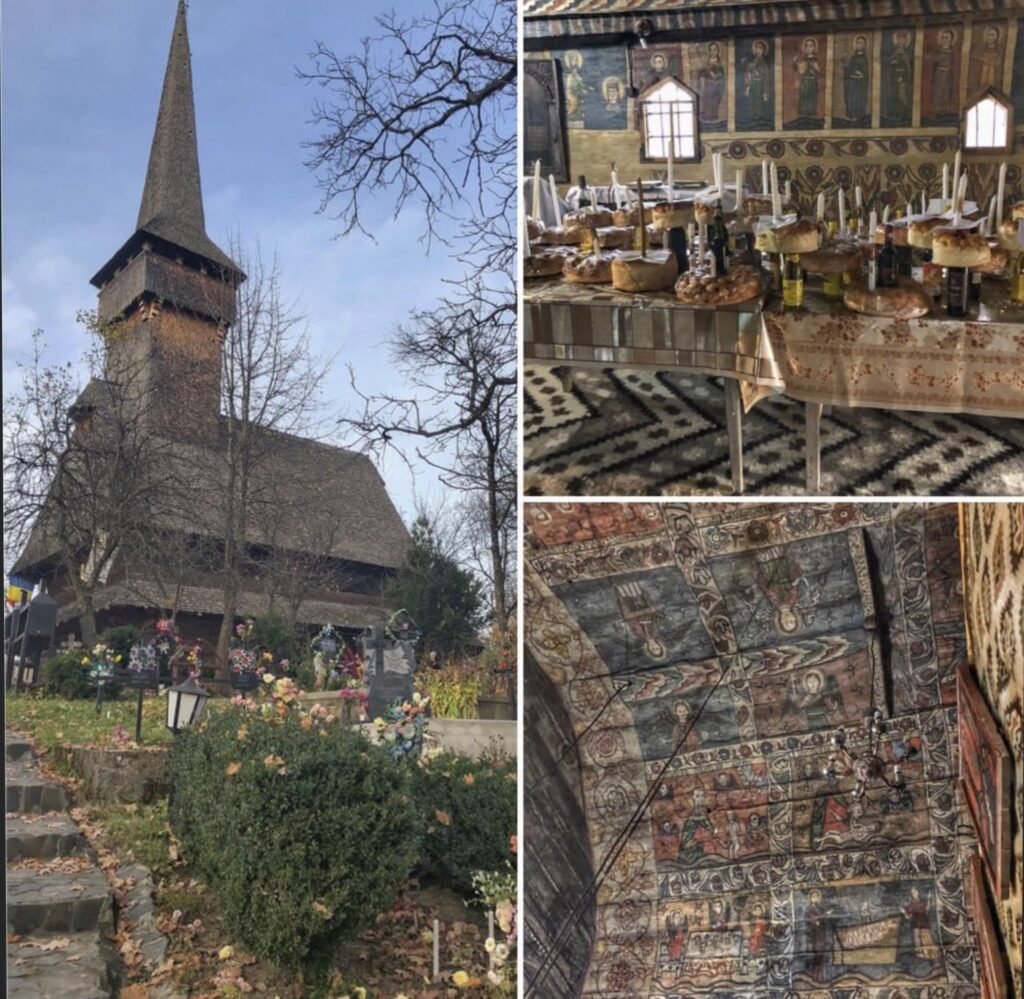
On the way back, we stopped at another beautiful UNESCO historic wooden church in Desesti. Like the Merry Cemetery, this one was laden with flowers and candles on its tombstones. inside the wooden church, the main sanctuary, contained a table that for All Saints Day was blanketed with bread and wine offerings. We were wowed with the amazing and one-of-a-kind immaculately painted dome, covered in ancient frescoes depicting scenes from early Christianity but with a unique local ‘folk’ artistic flair.
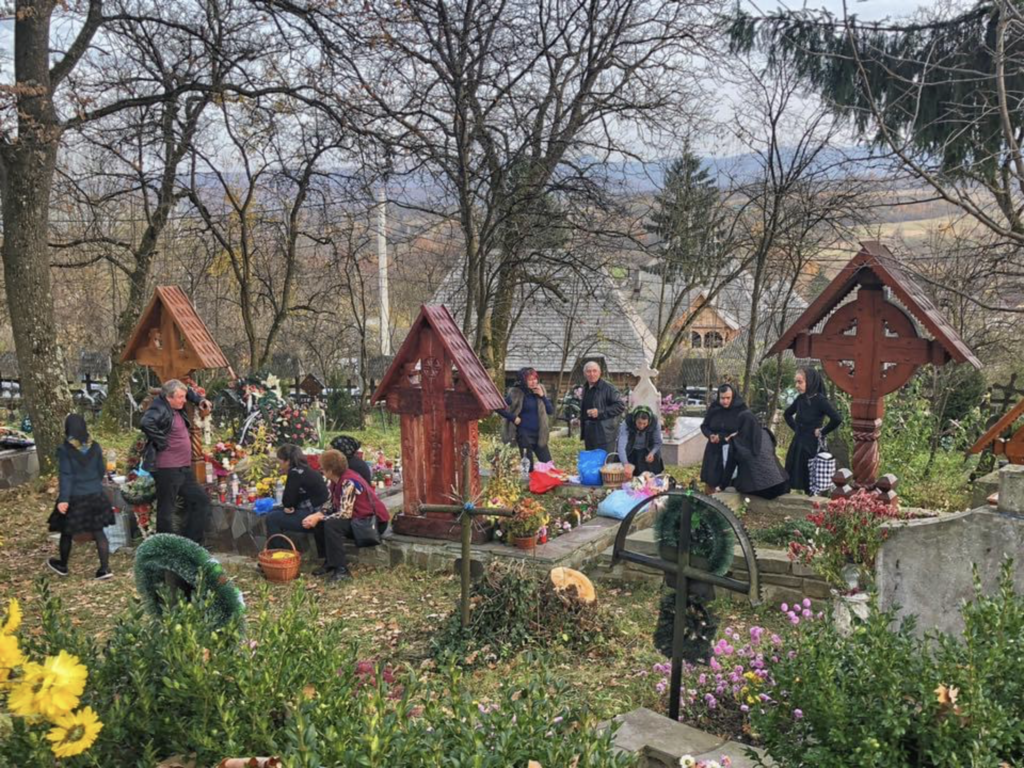
It was inspiring to see the way families and communities came together on this day. We were surprised and honored when two ladies walked up to us in the cemetery (on our way out) and stopped us to offer homemade goodies, cabbage rolls and hornica (spirits) to welcome us total strangers into their community. Although we couldn’t speak to each other, it was a touching and lovely exchange we won’t soon forget.

The wooden church in the town of Cupseni, where we stayed. This was within walking distance of Casa Carolina so we saw it many times on our walks (and runs!) through the nearby countryside.
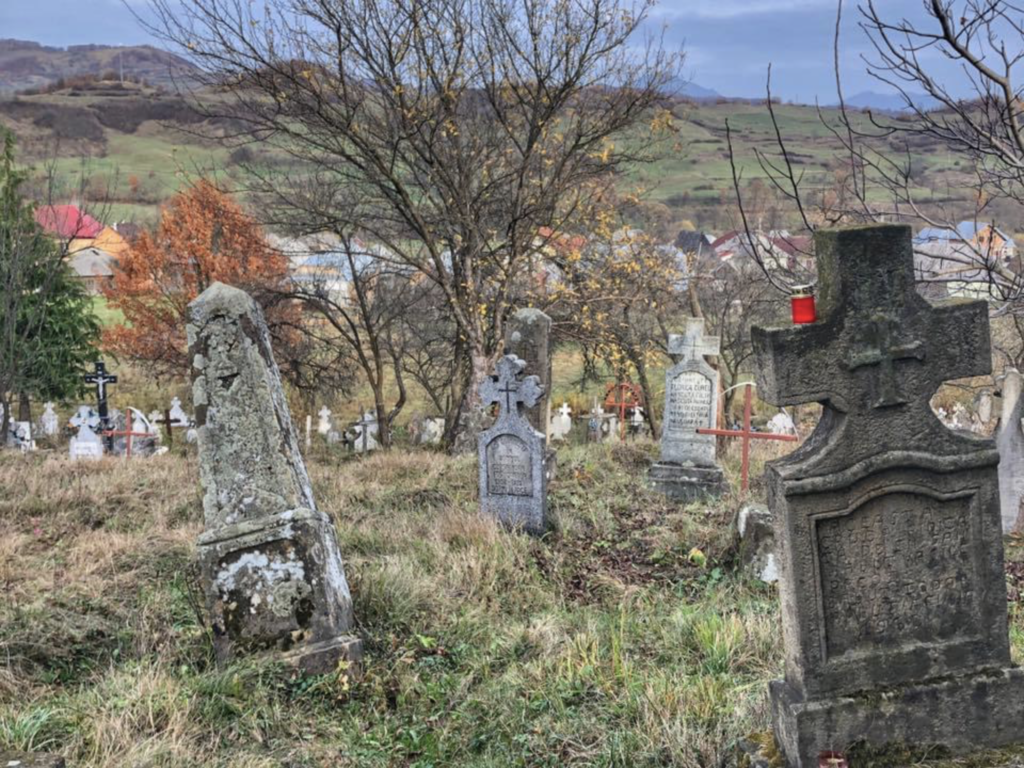
Stone tombstones

The ever-present haystacks, also near our home for the week.

Traditional wooden stake tombstones.

There is no better day than Sunday to explore the religious traditions of Maramures. We set out early Sunday morning for a full day of exploration and were greeted with the most perfect, crisp fall day you could ask for with landscapes on every turn to make you go, “ahh….today could not be any better.”
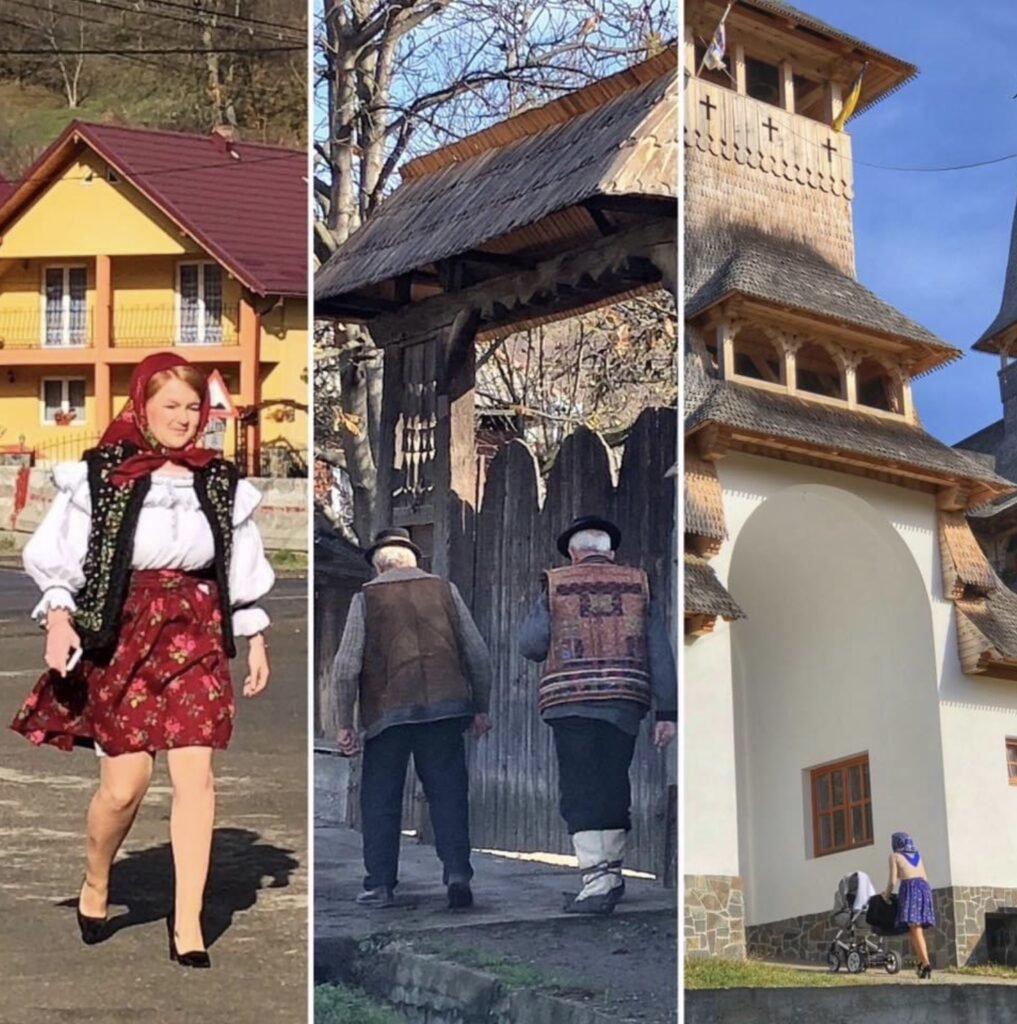
It was remarkable as an outsider to feel the essence of these sacred places through the tranquil hymns that flowed from the sanctuary’s interiors and observe the locals in their traditional Sunday best. An apparent weekly ritual, all the women wore ruffled shirts, vests or sweaters, mid-length floral skirts and head scarves. The only place that differed, we noticed was their feet where especially the young accessorized plentifully with glitter and suede pumps. The men always topped off their look with a dapper hat, and sometimes even intriguing and very ‘elven-like’ footwear as the man in this picture. Simply extraordinary to see all these people which continue to wear these very traditional outfits today despite our modern times and trends… it’s still their ‘Sunday best.’

Another family heads to church. This is one of the few places in the country (maybe Europe?) where you can easily witness such a large showing of time-honored religious customs.

More wooden churches

A up-close view of the intricate craftsmanship of the rooftops.
Barsana Monastery

Walking though one of the main entrances to the simply dazzling Barsana Monastery, one of our highlights of the 8 Maramures UNESCO churches for its peaceful undulating grounds and master craftsmanship.
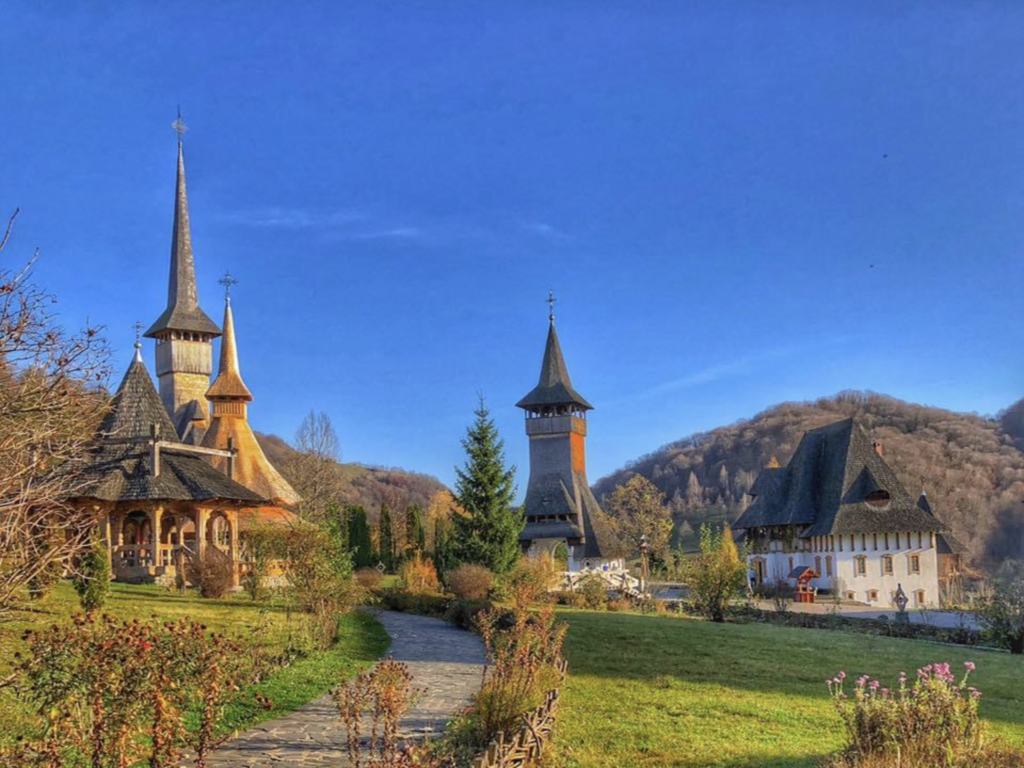
These serene grounds beg for meditation and prayer.

It was covered with unique touches like ingenious wooden spiral staircases, chandeliers and frescoes.
Rogoz

Church of the Holy Archangels of Rogoz, one of the oldest (again UNESCO) from 1633…incredibly well preserved and a quick drive from Casa Carolina.
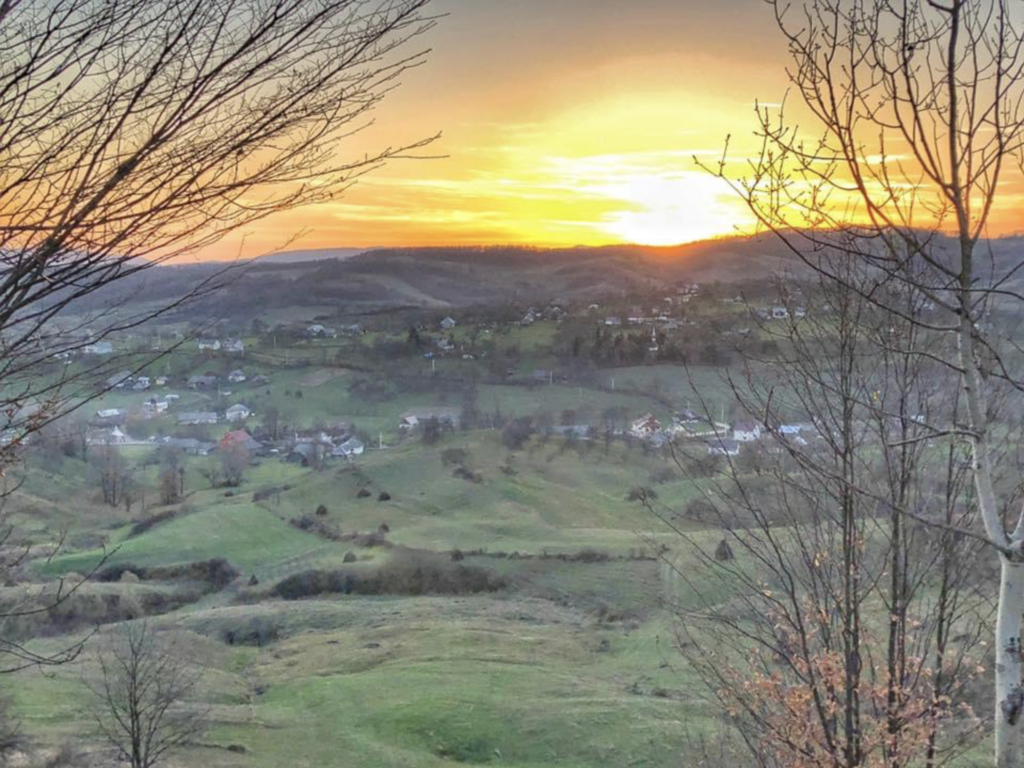
A stunning sunset over the valley where we stayed.

Sylvia, Casa Carolina’s hostess from afar, did an excellent job offering loads of opportunities to interact with locals and engage in authentic Maramureş experiences, from photography sessions, visiting craftsmen, and even a horse drawn buggy ride around the area. We chose to do the traditional breadmaking experience right at home. Mandy, Viorica and her mother-in-law Valeria knead (and pound) the raw dough to get the process started. (Notice Mandy’s piddly little dough-ball compared with Valeria’s?.) This was hard work! But wow… so special to be able to understand a process that has gone on in these homes for centuries. No special tools required, just a strong back, hands, and arms.

Although eyes were indeed raised at a man doing such a job, after the dough had risen, Greg was ready to participate, he stepped in and got to rolling it out. We were instructed to make snake-like dough tube and then form circles. We also were taught how to make the traditional pretzel shapes.
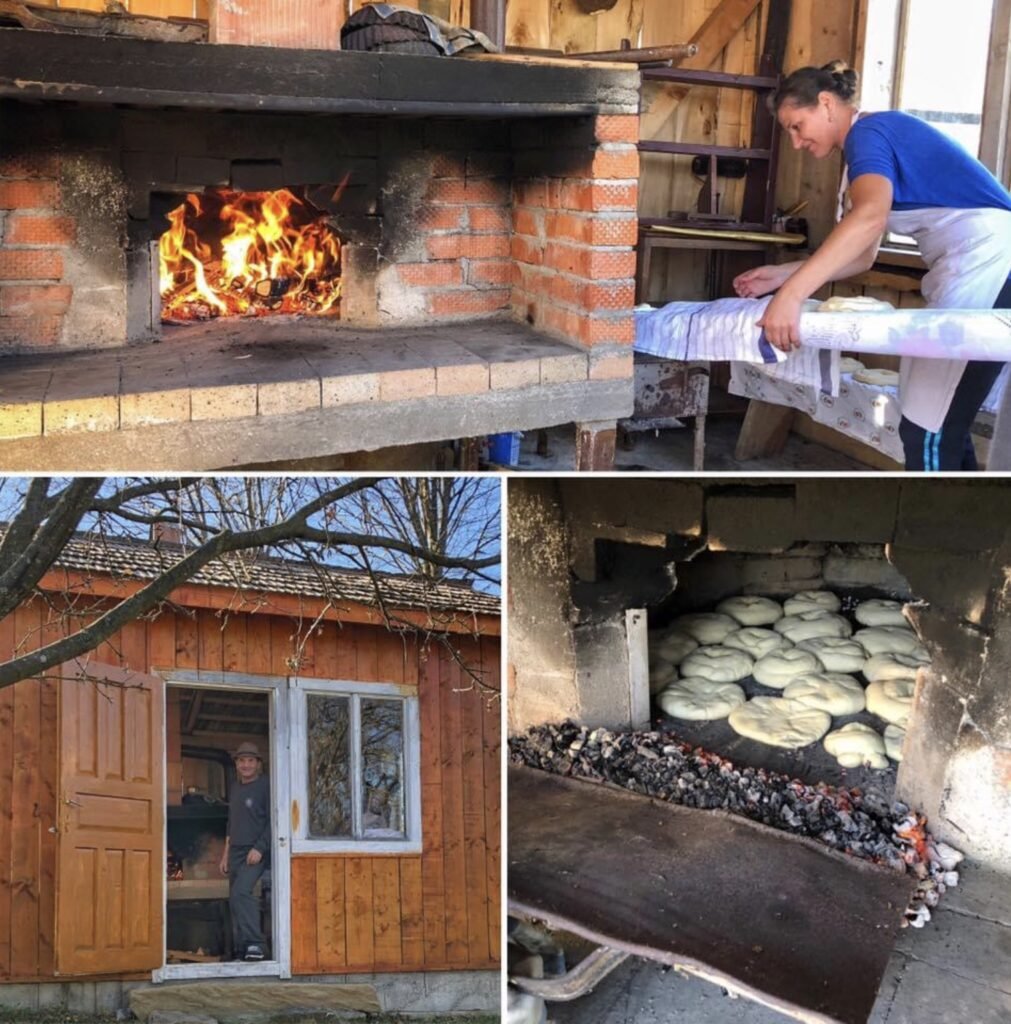
A large outdoor wood fired brick oven was fired up in preparation for the bread baking. Viorica’s father-in-law stands helpfully in the doorway. In fact, anytime he tried to assist in any way, Valeria would shoo him out of the way. This bread making was, it seemed, was the matriarchs job. It took awhile for the fire, or foq* in Romanian to get hot enough. We stood wondering how the baking would be done with the coals and wood in the oven. Once it was determined to be hot enough, all the coals were swept to the front at the opening and then the bread dough rings inserted into the oven. The entrance was then covered with a metal sheet and sealed. (*”foq” pronounced identically like another English ‘F’ word… which we all got pretty giggly when Viorica kept saying to “foq fire”. “foq” means fire in Romanian. Ah, you gotta love lost-in-translation moments.)
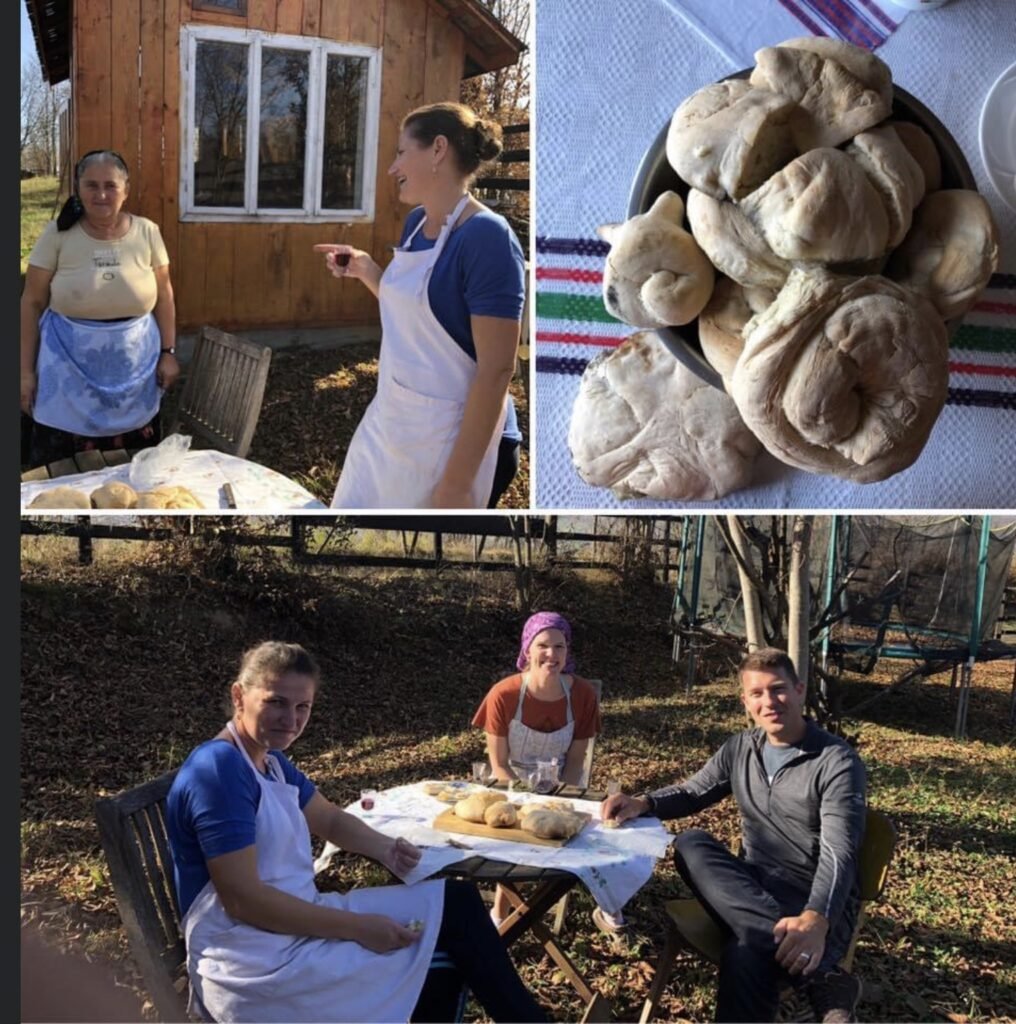
Once the buns had cooked, they set up a lovely table for us and we indulged in our hard fought creation and some back and forth Spanglish conversation (Viorica spoke some Spanish). And, More tasty fruit brandy was brought out.
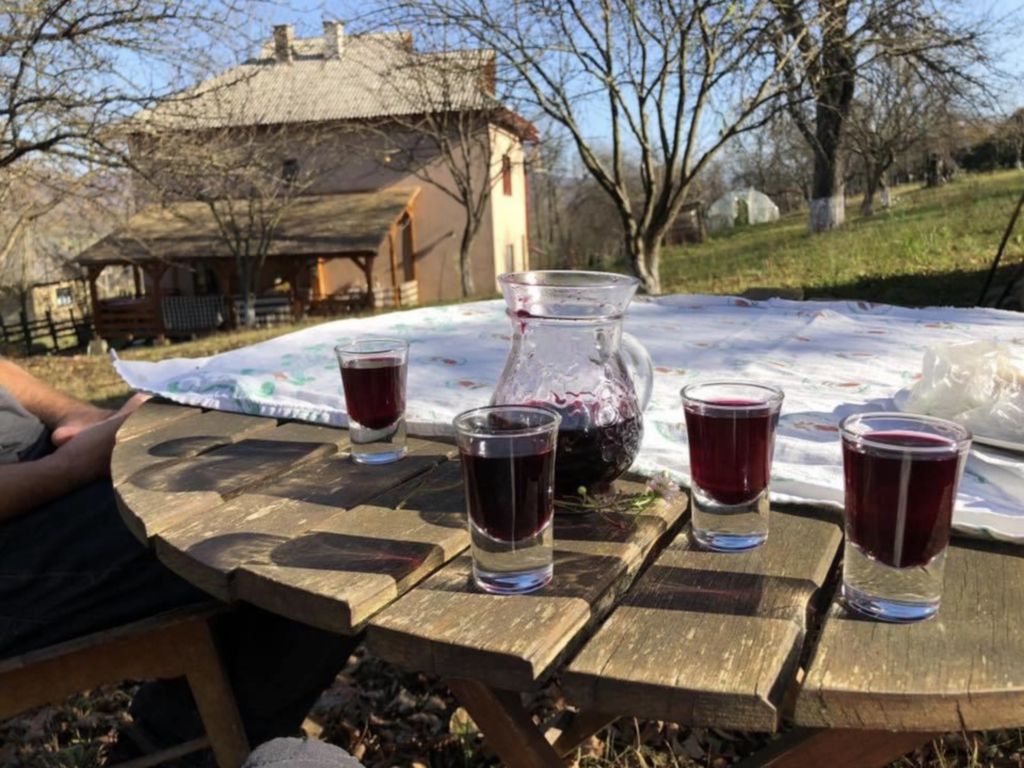
It was a perfect wrap up of our time in Maramures. We are so grateful to have learned a little about this amazing place and culture. Big thanks to Casa Carolina and all the people involved to help make our experience so special.

